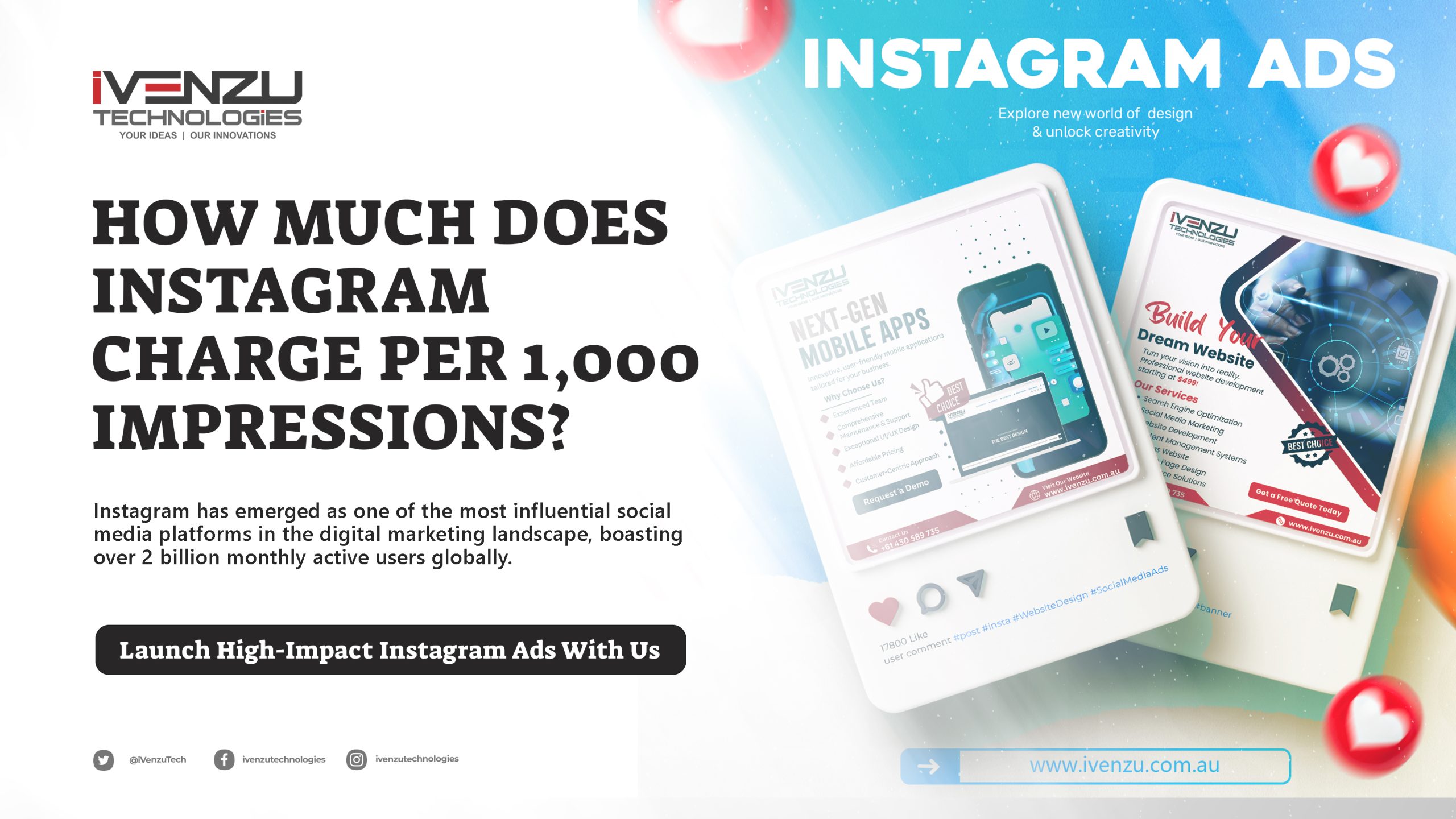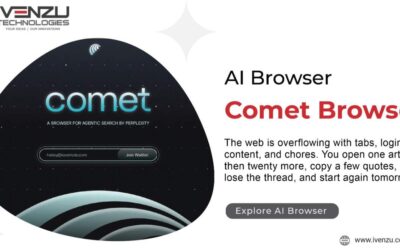How Much Does Instagram Charge Per 1,000 Impressions?
Understanding Instagram Advertising Costs and Its Value for Businesses
Instagram has emerged as one of the most influential social media platforms in the digital marketing landscape, boasting over 2 billion monthly active users globally. Its visually rich interface and highly engaged audience make it a go-to platform for businesses looking to amplify their reach, promote products, and drive meaningful engagement. Whether you’re a small business or a global brand, Instagram advertising offers the potential to connect with a diverse audience effectively.

However, one of the most pressing questions businesses face when considering Instagram ads is: How much does Instagram charge per 1,000 impressions (CPM)? The answer to this question is vital for building a robust advertising strategy and managing your budget effectively.
Instagram uses a cost-per-thousand-impressions (CPM) model for many of its ad campaigns, making it important to understand how these costs are calculated, what factors influence them, and how they compare to other platforms. On average, Instagram charges around $5 to $15 per 1,000 impressions, though this figure can vary widely based on your industry, audience targeting, and the quality of your ad creatives.
In this guide, we’ll delve into the factors that influence Instagram’s CPM, provide insights into industry benchmarks, and share actionable strategies to maximize your advertising ROI. By understanding these costs in detail, you can make informed decisions about allocating your budget and achieving your business goals on Instagram.

1. What Are Instagram Impressions and CPM?
Before diving into the costs, it’s essential to understand the terms impressions and CPM:
- Impressions refer to the total number of times your ad is displayed on users’ screens, regardless of whether they interact with it.
- CPM (Cost Per Mille) is the advertising cost per 1,000 impressions. It’s a standard metric for evaluating the cost-effectiveness of ad campaigns.
For example, if Instagram charges $10 CPM, it means you’ll pay $10 for every 1,000 impressions your ad receives. This model is ideal for businesses focusing on brand awareness and visibility.

2. How Instagram’s CPM Is Calculated
Instagram’s CPM isn’t a fixed rate; it operates through an auction-based system where advertisers bid for ad placements. The Instagram Ads Manager determines ad costs based on several factors, including:
- Ad Placement: Whether your ad appears in Stories, Feed, Explore, or Reels.
- Competition: The number of advertisers targeting the same audience.
- Target Audience: Highly specific audiences often lead to higher CPMs.
- Ad Relevance: Ads with higher engagement rates and relevance scores generally cost less.
- Time of Year: Costs typically rise during peak seasons like holidays or major sales events.
3. Factors That Influence Instagram CPM
Several factors can significantly impact how much Instagram charges for 1,000 impressions. Below are the key determinants:
3.1 Target Audience
- Age Group: Younger audiences, such as Gen Z, are often more expensive to target due to higher demand.
- Location: Ads targeting users in metropolitan areas or affluent regions usually have higher CPMs.
- Interests and Behaviors: Specific niche interests can increase competition, driving up costs.
3.2 Ad Placement
Instagram offers multiple ad placements, each with varying CPM rates:
- Instagram Feed: Offers high visibility but can be more expensive.
- Instagram Stories: Generally more cost-effective but requires engaging, short-form content.
- Instagram Reels: A newer format with growing popularity; CPMs can fluctuate.
- Explore Page: Premium placement with higher costs due to limited availability.
3.3 Industry
Industries like finance, real estate, and e-commerce often experience higher CPMs due to intense competition. Conversely, non-profits and niche markets may have lower rates.
3.4 Quality of Ad Creatives
Engaging visuals, compelling captions, and clear calls-to-action (CTAs) can improve your ad’s relevance score, lowering your CPM.
3.5 Ad Budget and Bidding Strategy
Higher budgets allow for more flexibility in bidding, often resulting in lower CPMs. Instagram offers three bidding options:
- Automatic Bidding: Instagram optimizes your spend for the best results.
- Manual Bidding: You set a maximum bid for impressions.
- Cost Cap Bidding: Ensures your average CPM doesn’t exceed a set amount.
4. Average Instagram CPM by Industry
Below is an industry-specific breakdown of Instagram’s average CPM rates:
| Industry | Average CPM ($) |
| E-commerce | $5–$12 |
| Finance | $15–$30 |
| Technology | $7–$15 |
| Healthcare | $5–$10 |
| Travel and Tourism | $6–$13 |
| Real Estate | $10–$25 |
| Non-Profit/Charity | $3–$7 |
These figures highlight the variability of Instagram advertising costs across different sectors.
5. Comparing Instagram CPM to Other Platforms
Instagram’s CPM is competitive but generally higher than that of platforms like Facebook and Pinterest. Here’s a quick comparison:
| Platform | Average CPM ($) |
| $5–$15 | |
| $5–$10 | |
| $10–$25 | |
| TikTok | $4–$9 |
| YouTube | $10–$30 |
| $2–$5 |
6. How to Reduce Your Instagram Advertising Costs
To maximize ROI while keeping costs low, follow these strategies:
1. Refine Your Targeting: Avoid overly broad or highly specific targeting; find a balance.
2. Use High-Quality Content: Invest in visually appealing and engaging content.
3. Test Multiple Ad Formats: Experiment with Stories, Reels, and carousel ads to identify what works best.
4. Leverage A/B Testing: Run split tests to optimize ad creatives and targeting.
5. Schedule Ads Strategically: Focus on times when your audience is most active.
7. Maximizing ROI from Instagram Ads
1. Track Key Metrics: Monitor CPM, click-through rate (CTR), and conversion rate.
2. Retarget Warm Audiences: Retarget users who have interacted with your website or Instagram profile.
3. Incorporate User-Generated Content (UGC): Use authentic, relatable content created by your audience.
4. Partner with Influencers: Collaborate with influencers for cost-effective reach and engagement.
5. Optimize Landing Pages: Ensure your landing pages are mobile-friendly and conversion-focused.
Is Instagram Advertising Worth It?
Instagram advertising offers businesses a powerful way to reach a highly engaged audience. While CPM rates can vary widely, understanding the factors influencing these costs helps you allocate your budget effectively. By refining your targeting, optimizing your content, and leveraging data-driven strategies, you can achieve a significant return on investment and build a stronger brand presence.
Whether running a small-scale campaign or managing a comprehensive advertising strategy, Instagram’s cost-per-thousand-impression model provides transparency and flexibility to fit various marketing goals. By focusing on maximizing ROI and continuously optimizing your campaigns, you can unlock Instagram’s full potential for your business.
Your questions and answered
1. How much does Instagram charge per 1,000 impressions (CPM)?
Instagram advertising costs typically range from $5 to $15 per 1,000 impressions, depending on your industry, audience targeting, and ad quality. High-competition sectors like finance or real estate may see CPMs as high as $30.
2. Is Instagram advertising worth it for small businesses?
Yes, Instagram ads can be highly effective for small businesses. With precise targeting, engaging content, and strategic spending, small businesses can increase brand awareness, generate leads, and boost website traffic cost-efficiently.
3. What factors affect Instagram CPM rates?
Several factors influence Instagram CPM costs, including:
- Your target audience (age, location, interests)
- Ad placement (Feed, Stories, Reels, Explore)
- Industry competition
- Ad quality and engagement rate
- Seasonality and time of year
4. How does Instagram CPM compare to Facebook and TikTok?
Instagram’s CPM tends to be slightly higher than Facebook and TikTok. Here’s a quick comparison:
- Instagram: $5–$15
- Facebook: $5–$10
- TikTok: $4–$9
However, Instagram often delivers higher engagement, making the investment worthwhile.
5. What’s the cheapest way to advertise on Instagram?
To reduce costs:
- Use automatic bidding
- Target the right audience size (not too broad, not too narrow)
- Create engaging visuals and videos
- Run A/B tests to find the best-performing creatives
- Advertise during non-peak times
6. What is the best Instagram ad placement for ROI?
While it depends on your goals, Instagram Stories and Reels usually offer lower CPMs and high engagement. Feed ads provide more visibility but can be more expensive.
7. Can Instagram ads drive real website traffic?
Absolutely. With the right CTA (Call-to-Action), targeting, and landing page, Instagram ads can significantly increase website visitors, especially when combined with retargeting and conversion tracking.
8. Do Instagram ads work for getting clients?
Yes. Instagram ads are great for lead generation, retargeting website visitors, and attracting potential clients through targeted campaigns and influencer collaborations.
9. How can I increase ROI from Instagram ads?
- Retarget warm audiences (like profile visitors or previous website users)
- Use User-Generated Content (UGC) to build trust
- Optimize your landing pages for mobile and conversions
- Collaborate with micro-influencers for authentic reach
10. How do I start Instagram ads for my business?
- Set up a Meta Ads Manager account
- Define your target audience and budget
- Create eye-catching visuals or videos
- Choose the right placement (Stories, Feed, Reels)
- Launch your campaign and monitor performance
More Latest Blog
Comet Browser (AI Browser) The web is overflowing with tabs, logins, content, and chores. You open one article, then twenty more, copy...
What is a Software Service Company? A software service company is an organization that provides clients with specialized...
What is Quantum Computing and Why We Should Know? Quantum computing is an emerging technology that leverages the principles of quantum...
What is the Responsibility of an App Developer? A Comprehensive Guide With the ever-increasing reliance on technology, the role of an app...




